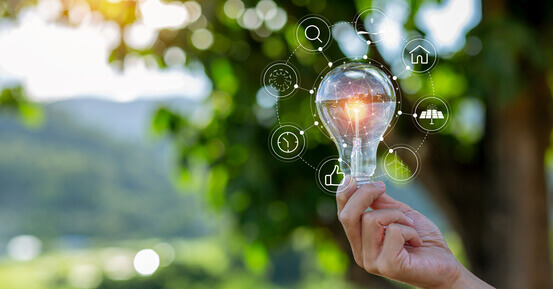How asset circularity and lifecycle management contribute to IT industry sustainability
Examining how Secure IT Asset Disposition (SITAD) and IT Asset Lifecycle Management solutions support the move towards a circular economy

APAC organisations are increasingly investing in IT asset management strategies that consider the environment in all stages of a device’s lifecycle. A circular economy is a business model that reduces material use as well as recapturing the electronic equipment and components waste to manufacture new products and materials.
This article will examine how your organisation can count themselves among the environmentally- responsible companies recognising the importance of sustainable business practices in accordance with the circular economy.
Understanding the circular economy and the importance of asset circularity
The e-waste Australians generate has doubled in the ten past years and New Zealand has one of the highest per-capita e-waste volumes in the world. According to research released by Canalys, only 11% ofAPAC partners have buyback or recycling programs for their PCs.
Although sustainability efforts are being championed by businesses looking to set green goals, the move toward the circular economy still has some distance to go. Organisations participating in the new lifecycle of electronic assets — namely produce-use-reuse — are contributing to initiatives such as a 100% carbon footprint reduction, a 1:1 take back ratio and sourcing post-consumer recycled materials for new devices.
Larger adoption of these and other sustainable business practices surrounding IT asset management will result in an increased Environmental, Social and Governance (ESG) score. To measure the levels of an organisation’s sustainability efforts, it’s assigned 0-100 score that encompasses everything from environmental impact to IT asset disposition protocols. Australasian businesses are increasingly aware of the significance of this score as sustainability efforts have a ripple effect from stakeholders all the way down to consumers. A recent Renolon report reveals that 85 percent of Australian consumers want retailers and brands to be more transparent regarding the sustainability of their offerings.
The imperative to deploy an effective IT asset management strategy is becoming increasingly understood. Let’s examine how your organisation can optimise resource efficiency and participate in industry-leading sustainability initiatives.
The full lifecycle management of your IT assets
From purchase to disposition, the lifecycle management of your IT assets should be monitored with a comprehensive end strategy in place. Here are the important considerations for sourcing a new piece of sustainable technology for your organisation:
- Reliability. What is the estimated life cycle of your new device? Ensuring your IT assets are designed with quality in mind can prolong their usefulness and improve your ability to recover some capital. In the event that the device’s components can be repurposed and sold after reaching its end-of-life stage, your business will be compensated in addition to contributing to the circular economy.
- Initial cost. A significant consideration for any business is its electronic hardware’s price point. Weighing cost against estimated lifecycle and repurposing potential can offer new insight into the overall value of the IT asset in question. Thanks to the ability to share the device or its parts after its usefulness to your company has expired, initial spend no longer has the ROI implications it once did . Understanding where these cost factors lie can have a positive impact on your total cost of ownership (TCO) for future sustainable products and assets.
- Expenses. Effective asset management considers the cost of repair for all e-devices. Understanding and evaluating the downtimes that could affect productivity while a piece of critical equipment is undergoing repair can also offer insight into the viability of your next technology assets. Factors such as preventative maintenance and the environment in which the equipment itself resides will affect its lifecycle.
- Changes in technology. An effective method of future-proofing your business is sourcing IT assets that can be adapted to ever-evolving technological advancements. Are there opportunities to modify or add to your IT infrastructure? What is the sustainability performance of your current electronic assets? Are you maximising the energy efficiency of your current business assets and resources? Estimating the usefulness and shelf life of your assets will have an impact on their lifecycle, as these timeframes may differ from the actual endpoint of an asset’s functionality.
Iron Mountain offers Secure IT Asset Disposition (SITAD) solutions designed to help your business manage its electronic asset lifecycle effectively. By implementing a strategy that takes the value chain of your e-good into account, your business will be able to maximise your assets’ reuse and recycle potential. SITAD efforts will dramatically decrease your organisation’s e-waste and have a net-positive effect on the environment.
The lifecycle of your electronic assets will pass through six phases:
- Planning.
- Procurement or acquisition.
- Deployment.
- Utilisation.
- Maintenance.
- Secure disposal.
Iron Mountain’s SITAD solution focuses on what the end-of-lifecycle means for your equipment and how it contributes to the circular economy. Under the parameters of Iron Mountain’s service, any electronic equipment that might be past its point of usefulness will be repaired, updated or harvested for any valuable materials. Many organisations are unaware of the intrinsic value of products they would otherwise simply throw away — for example, are you aware that there is 100 times more gold in a ton of mobile phones than in a ton of gold ore?
Since harvesting from used electronic goods produces substantially less carbon-dioxide than mining, your organisation will be furthering their commitment to environmental responsibility by implementing a SITAD solution.
Developing sustainable IT practices with asset lifecycle management (ALM)
Sustainable IT practices don’t begin with the end of your assets' usefulness. A comprehensive ALM strategy considers the circular economy even before purchasing new electronic devices. In addition to handling the secure disposal and repurposing of your assets, Iron Mountain’s experts can also help your business leaders understand the intrinsic value of devices with longer lifecycle value.
The effective management of devices across the breadth of your organisation can be a logistical nightmare without a deep understanding of asset viability under an ALM framework. By implementing an ALM solution, you’ll enjoy increased visibility into factors that determine the viability of your new and in- use electronic assets.
In accordance with ESG principles, ALM can help you understand how your electronic goods can perform at peak efficiency and with reduced financial and environmental costs. You’ll learn how to effectively automate old manual processes that were resource-dependent, cutting costs on resources like paper and ink cartridges.
The predictive and preventative maintenance of your assets will result in less equipment malfunction and repair, increasing the productivity of your workforce and the devices themselves. Once implemented, an ALM solution reduces the number of factors that influence your bottom line negatively.
Iron Mountain: Partners in sustainability
Iron Mountain offers a variety of services dedicated to supporting your business and its contributions to the circular economy. Here’s how you can implement a strategy to improve your operational sustainability efforts that’s backed by our comprehensive solutions:
Iron Mountain IT Asset remarketing will maximise the value of your retired IT assets via our refurbishment and data sanitisation services. We understand the value of privacy and data security that factors into the disposal strategies for every business, so we ensure complete data erasure and secure scrapping of all of your e-assets. Once your devices have been thoroughly cleansed, Iron Mountain will sell your old IT assets at market price and provide a comprehensive report to help you to understand how you’ve contributed to the circular economy.
E-waste recycling will demanufacture your retired IT devices into commodity categories in accordance with the strictest APAC regulations. We maintain visibility into all ESG and regulatory compliance criteria, including no-overseas and no-landfill policies for your decommissioned electronic goods. With Iron Mountain, your business will never have to second-guess your compliance with the latest evolving standards and guidelines.
Media destruction is an important element of sustainable IT management. After all, your media contains important and confidential information regarding your operational practices and customer data. Iron Mountain offers flexible destruction solutions that include disposal at one of our secure facilities. All of your data bearing media and hard drives’ media will be comprehensively cleansed before destruction, and you’ll receive a certificate of completion that catalogues every step of the process.
When it comes to corporate sustainability efforts that align with the circular economy, you can trust Iron Mountain. Our comprehensive SITAD and ALM solutions reduce the noise and allow your organisation to see a clear path toward improving environmentally responsible business practices that will drive your business to a greener future. We’ve helped a number of businesses begin a sustainability journey that works with environmental responsibility initiatives, and we would be happy to guide your organisation to achieve the same.
When you’re ready to learn more about how Iron Mountain can deploy a comprehensive and sustainable IT asset management strategy for your business, contact us for a free quote.
Featured services & solutions
IT Asset Disposition: remarketing, recycling, and media destruction
Enhance security, improve sustainability, and protect your brand reputation with our ITAD services
Corporate responsibility at Iron Mountain
At Iron Mountain we understand the impact of our actions in our society and our planet. That's why our CSR commitment is present on everything we do.
Rethink sustainability
At Iron Mountain, we strive to be our customers’ most trusted partner for protecting and unlocking the value of what matters most to them in innovative and socially responsible ways
Iron Mountain Green Report
Related resources
View More Resources
Circularity is the new IT imperative

The Benefits of E-Waste Management Go Beyond the Environment
